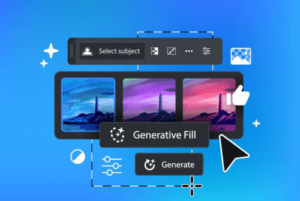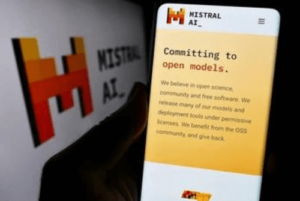In an age where music serves as an international tongue is now an art form in its own right. As technology continues to change the creative landscape, a stunning transformation is taking place the transition from standard music videos to mesmerizing lyric videos. Stanford University and Adobe researchers are involved in the research of that model.
They present a set of design rules for incorporating lyrics into music videos in a way that assures text readability while also unifying the viewer’s center of attention. They then build a fully automated pipeline that uses these rules to transform an input music video into a lyric video.
This work contributes to a set of design rules for creating lyric videos that assure text legibility and focus the viewer’s attention and a completely automated pipeline that uses these design criteria to generate lyric videos from input music videos, which can be any video with a song playing in the background.

unifies the viewer’s focus of attention. They further implement a fully automated pipeline that instantiates these guidelines to convert an input music video into a lyric video. The results shown above demonstrate that their pipeline is able to generate lyric videos from a wide variety of inputs.
Prior studies related to Music to Lyrics video:
Tools for adding text to lyrics video:
Prior to this work, some technologies were developed to assist in the addition of words to videos in various ways. EnACT, for example, allows you to add captions to movies and even add emotions to the words, but it’s a manual process, which means you have to handle a lot of it yourself, such as timing when each word appears in the video.
Another program, TextAlive, is useful for creating films in which the words move and dance in time with the music. However, it is more concerned with the words themselves than with how well they fit with the video.

Lyric Phrase Content and Layout:
The term “lyric phrase” refers to a group of words from a song’s lyrics that appear in a video between specific start and stop times. Nobody has directly researched how simple it is to read these lyrics in videos previously, so They draw on past research on how easy it is to read words at the bottom of a video frame known as subtitles.
According to their findings, having extremely long lines of text can make it difficult to read. As a result, it’s a good idea to break up a large chunk of text into smaller chunks, similar to how you’d take a breath while speaking or singing. Adobe Premiere Pro and YouTube Studio achieve this by analyzing factors like punctuation, the length of the text, and how long it stays on the screen.
Songs, on the other hand, differ from a typical conversation in that they are composed of groups of words that are sung together. So, based on when the lines are sung close together in time, this system automatically organizes a song’s lyrics into discrete lyric phrases. Once they’ve decided on a phrase, they determine where to place line breaks to make the text easier to read. According to several research, it is preferable to split the text at specific locations, such as where a sentence or portion of a sentence stops.
However, this does not work well for song lyrics because they do not usually follow standard writing conventions and do not include a lot of punctuation. Instead, they divide the lengthier text into two or more lines, making each line roughly the same length. This reduces the amount of time you have to move your eyes around when reading, which is more comfortable for viewers and helps reduce eye strain. It also adheres to a design concept that states that there should be no extremely short lines in a collection of lines.
Text arrangement for the user center of attention
The human eye is only capable of reading words in a tiny region at a time. As a result, throughout this work, we make certain that the text is close to but not covering up the crucial elements that people are looking at.
Consider it like subtitles in a movie. These subtitles are sometimes put near the person speaking or other crucial events in the film. For example, if someone is speaking in a movie, the words they are saying may appear on the screen near them.
There are intelligent systems that can detect where you’re looking and shift the subtitles to where you’re looking. You won’t have to move your eyes as much this way. It allows you to concentrate on what is happening in the video.
According to several research, when subtitles are inserted in this manner, viewers miss less of the video and can understand more about what’s going on, including aspects that aren’t mentioned in words.
People also put phrases near the relevant information in other areas, such as putting statistics on a screen or labeling objects in a picture. In this work, they are implementing these concepts. They’ve made a guideline that says the music lyrics should be close to the vital stuff you’re looking at, but not cover them up. In their procedure, they use computer models to assist them.
Future of music to lyrics video generation:
This topic’s future promises enormous opportunities for improving the merging of lyrics and music videos. The refinement of the center of attention segmentation algorithm is one possible area for further investigation. This could entail incorporating powerful deep learning models that take into account elements such as motion and color to automatically determine where the viewer’s attention is focused within the video.
Furthermore, a multi-modal approach, such as recognizing which instrument is playing or differentiating between numerous singers, could increase the synchronization of lyrics with video information, particularly in complicated musical compositions. Furthermore, as we continue to extend the use of lyric videos across various video styles and formats, we must solve the issue of limited spare regions in some videos. Future studies could look for novel ways to adapt existing video content to make room for lyric text.
Methods for identifying and blurring locations with insufficient visual information may be included, guaranteeing those lyrics can be presented successfully even in videos when human faces or bodies dominate the screen. As technology progresses and AI-driven technologies become more sophisticated, the future of music video-to-ricles video conversion holds the promise of ever more seamless and exciting visual experiences for music fans all around the world.
Additional research material
This comprehensive study on the translation of music videos into lyric videos is now available to the public. The whole research report, which includes a detailed examination of their methodologies, design criteria, and conclusions, is freely accessible to the public on a platform such as arxiv.org. It is critical to emphasize that their commitment to open access extends to both the study material, which is presented in a way that is accessible to a wide audience, and the technical components. This implies that the extensive technical documentation is open to scholars and individuals with diverse degrees of technical expertise, providing inclusivity and widespread access to this work in revolutionizing the world of music videos.
Potential applications of music to lyrics video generation:
The ideas and techniques presented above in the context of music video to lyrics video conversion have a wide range of possible applications in a variety of fields:
1. Entertainment sector: The principal application is in the entertainment sector, where musicians and producers may employ AI-powered technologies to develop visually compelling lyric videos for their songs. This can improve the overall viewer experience and boost engagement on sites such as YouTube and music streaming services.
2. Gaming Industry: Synchronized subtitles or lyric videos in video games can provide greater immersion, especially in games with narrative-driven material and conversation.

3. Education and Learning: Educational content providers can use similar technologies to create educational videos with synchronized subtitles, increasing learners’ accessibility and engagement. This is especially beneficial for online classes, tutorials, and language learning platforms.
4. Accessibility: AI-powered subtitle placement and synchronization can increase accessibility for people who are deaf or hard of hearing. It can be used to make films, TV shows, and internet media more inclusive by applying it to them.
5. Advertising and Marketing: Advertisers and marketers can leverage lyric video conversion techniques to create visually appealing and attention-grabbing advertisements that seamlessly integrate text and visuals. This can enhance brand messaging and audience engagement.
6. Content Localization: For foreign audiences, AI-powered systems can help with translation and localization by providing synchronized subtitles or lyric videos in many languages. This is especially useful for international music releases and video productions.
7. Film Industry: Filmmakers and directors might use similar technology to increase the impact of their films by developing aesthetically appealing subtitles that complement the film’s tone and style.
8. Social Media: AI-driven tools allowing users to make fascinating lyric videos for their personal videos and stories can be implemented by social media platforms, providing a creative dimension to user-generated material.
9. Video Editing Software: Developers of video editing software may add AI-based features for automatic subtitle and lyric video generation, making the process easier for content creators.
10. Art and Visual Storytelling: Artists and creators of visual narratives can use AI-powered lyric video conversion techniques to produce one-of-a-kind multimedia art pieces that integrate music, text, and pictures.
As technology advances, the applications of AI in video content generation and enhancement are anticipated to rise, providing innovative solutions across a wide range of sectors and artistic activities.
Pipeline of music video to lyrics video:
They’ve developed a set of guidelines for creating lyric films from standard music videos. Then, using these guidelines, they created a computer program that converts a music video into a lyric video. The music video can be any video that has a song playing in the background, such as official music videos, live concert recordings, or even fan-created videos in which people pretend to sing along. The words in the lyric video appear a certain way by default: they use a font called Poppins, they’re white, and they’re a set size. However, they can customize their appearance to match your personality.
This program operates in three stages. In the first phase, it prepares the song’s lyrics and determines when each word should appear and disappear in the video. It also examines the video to determine which parts are most important to concentrate on. The second step is to decide where to place the words on the screen. It uses a computer method to locate the optimum positions depending on factors such as what is essential in the film, what colors are present, and where the words were previously. Finally, in the third step, it creates the real lyric video, complete with moving words that correspond to the song and video.

Final remarks on a music video to lyrics video generation:
Despite the time and careful planning required to create them, lyric videos are commonly created today. They offer seven design guidelines to assist authors in making sure the text in these videos is readable and that the viewer’s focus of attention is consistent. Following these design standards, they next develop a completely automated pipeline that turns an input music video into a lyric video. They show the pipeline’s effectiveness by creating lyric films from music videos that differ greatly in format and graphics.
According to 57-respondent user research, lyric videos created by this pipeline are effective in accomplishing their goals of assuring text readability and maintaining a unified center of attention.

Reference
https://arxiv.org/pdf/2308.14922.pdf
Similar Posts
-
Discover the Best AI Image Generator Tools in 2024

-
Explore the 6 top Image-to-Video AI Tools to Add Amazing Artistic Touch

-
Best AI Music Generator Tools of 2024 Easily Accessible to Every Musician

-
Explore the Best Image2Image AI Models that Revamp Your Creativity

-
Explore the 10 Best Text to Image AI Tools that Generate Incredible Graphics

-
Mistral AI Revolutionary LLM: MoE8*7B Via Torrent Links

